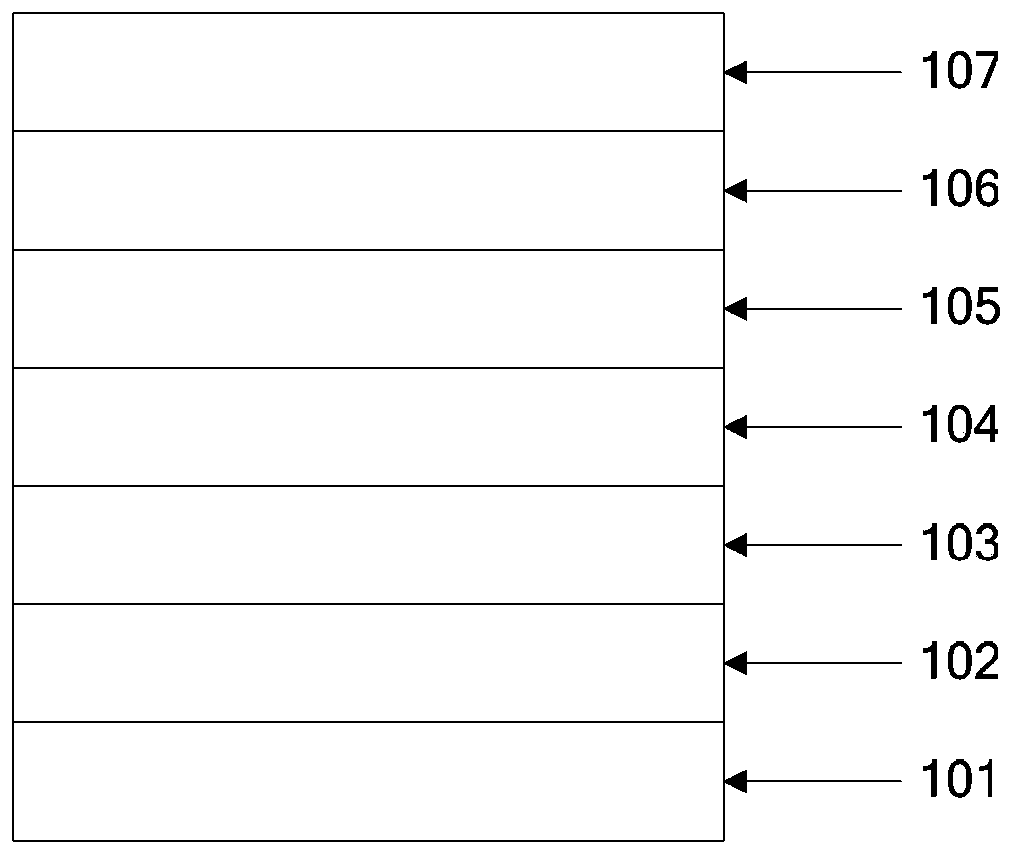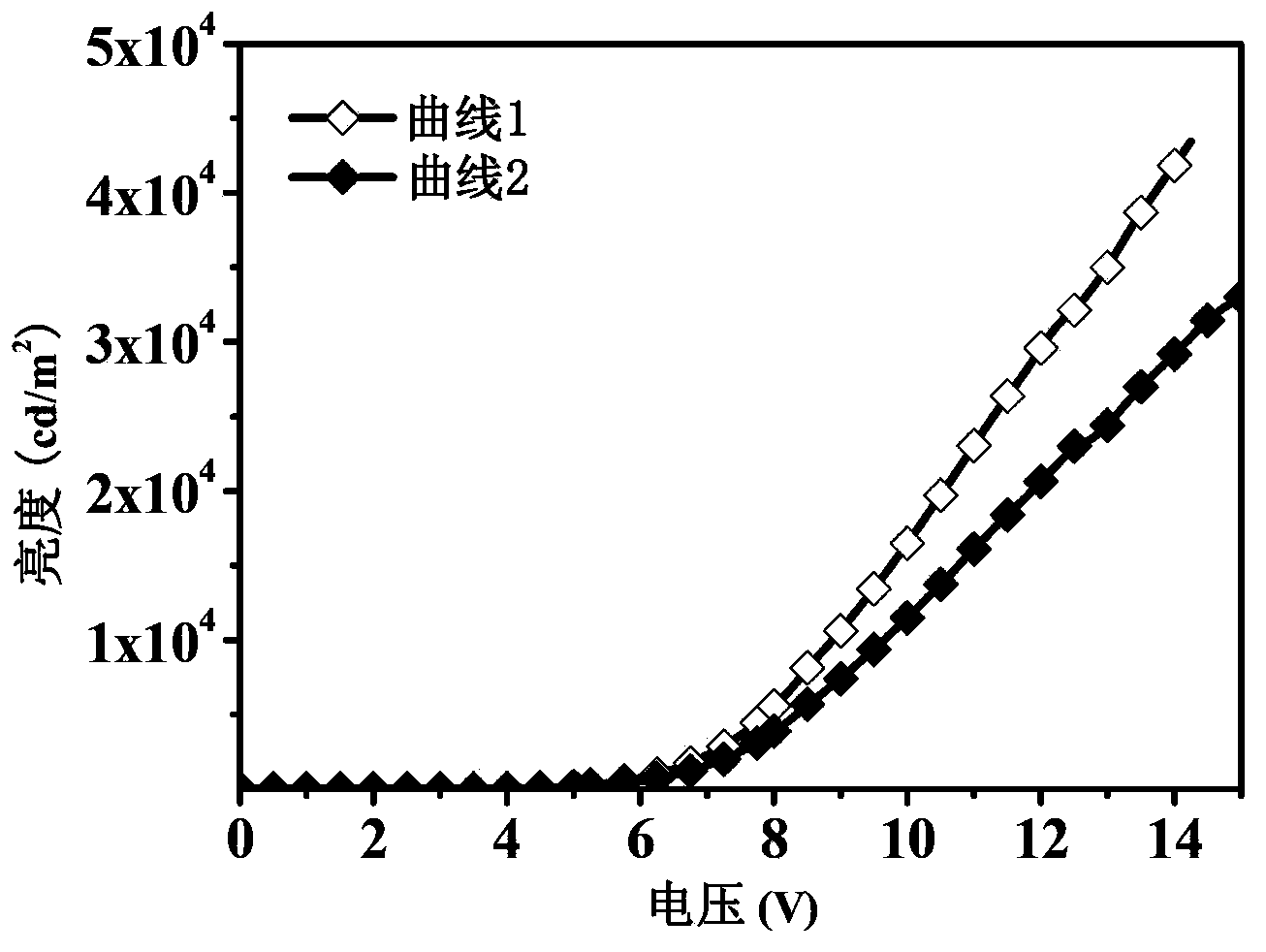Inverted bottom-emitting organic electroluminescence device and manufacturing method thereof
An electroluminescence and bottom emission technology, applied in the field of inverted bottom emission organic electroluminescence devices and their preparation, can solve the problems of inconsistent evaporation temperature, reduced exciton recombination probability, difficult evaporation temperature, etc. Light scattering, the effect of increasing the transmission rate
- Summary
- Abstract
- Description
- Claims
- Application Information
AI Technical Summary
Problems solved by technology
Method used
Image
Examples
Embodiment 1
[0040] First, the ITO glass is subjected to photolithography treatment, cut into the required size, and the organic pollutants on the surface of the ITO glass are removed with detergent, deionized water, acetone, ethanol, and isopropanol for 15 minutes each;
[0041] Then spin-coat the auxiliary electron transport layer: first, P3HT is doped into TPBi according to the ratio of 2% by mass to form a doped mixed material, which is expressed as P3HT:TPBi; secondly, the doped mixed material is dissolved in chlorobenzene In , configure a polythiophene solution with a mass percent concentration of 5%; then, spin-coat the polythiophene solution on the surface of the ITO layer of ITO glass, and control the thickness of the spin coating to 100 nm; finally, at 100 ° C annealing to prepare an auxiliary electron transport layer;
[0042] Next, on the surface of the auxiliary electron transport layer, the first electron transport layer is sequentially laminated and evaporated, the material ...
Embodiment 2
[0045] First, the IZO glass is photolithographically processed, cut into the required size, and then ultrasonicated for 15 minutes with detergent, deionized water, acetone, ethanol, and isopropanol to remove organic pollutants on the surface of the IZO glass;
[0046] Then spin-coat the auxiliary electron transport layer: first, P3AT is doped into TPBi according to the ratio of 1% by mass to form a doped mixed material, which is expressed as P3AT:Bphen; secondly, the doped mixed material is dissolved in toluene , configured as a polythiophene solution with a mass percent concentration of 20%; then, spin-coat the polythiophene solution on the surface of the IZO layer of IZO glass, and control the thickness of the spin coating to 200nm; finally, anneal at 100°C processing to obtain an auxiliary electron transport layer;
[0047] Next, on the surface of the auxiliary electron transport layer, the first electron transport layer is sequentially laminated and evaporated, the materia...
Embodiment 3
[0050] First, the IZO glass is photolithographically processed, cut into the required size, and then ultrasonicated for 15 minutes with detergent, deionized water, acetone, ethanol, and isopropanol to remove organic pollutants on the surface of the IZO glass;
[0051] Then spin-coat the auxiliary electron transport layer: first, poly-12-alkylthiophene is doped into TAZ according to the ratio of 5% by mass to form a doped mixed material, which is expressed as poly-12-alkylthiophene: TAZ; secondly, The doped mixed material is dissolved in dichlorobenzene, configured as a polythiophene solution with a mass percent concentration of 10%; then, the polythiophene solution is spin-coated on the surface of the IZO layer of IZO glass, and the spin coating is controlled to The thickness is 10nm; finally, it is annealed at 100°C to obtain an auxiliary electron transport layer;
[0052] Next, on the surface of the auxiliary electron transport layer, the first electron transport layer is se...
PUM
| Property | Measurement | Unit |
|---|---|---|
| thickness | aaaaa | aaaaa |
| thickness | aaaaa | aaaaa |
| thickness | aaaaa | aaaaa |
Abstract
Description
Claims
Application Information
 Login to View More
Login to View More - R&D
- Intellectual Property
- Life Sciences
- Materials
- Tech Scout
- Unparalleled Data Quality
- Higher Quality Content
- 60% Fewer Hallucinations
Browse by: Latest US Patents, China's latest patents, Technical Efficacy Thesaurus, Application Domain, Technology Topic, Popular Technical Reports.
© 2025 PatSnap. All rights reserved.Legal|Privacy policy|Modern Slavery Act Transparency Statement|Sitemap|About US| Contact US: help@patsnap.com


